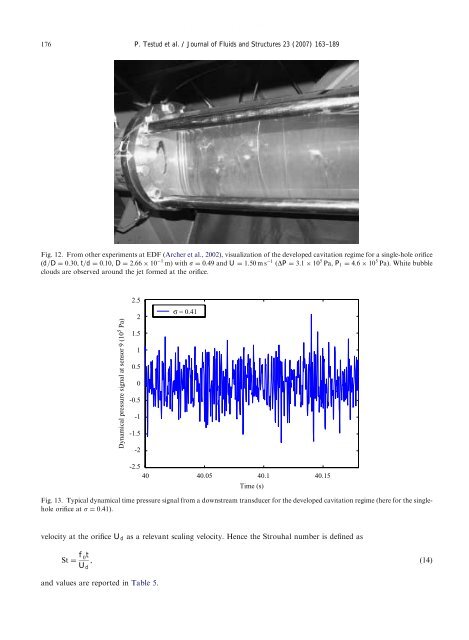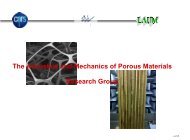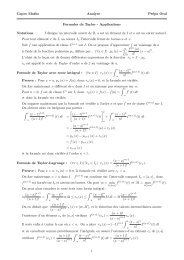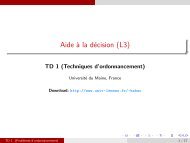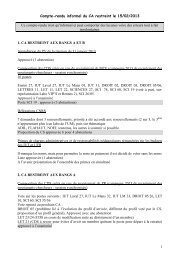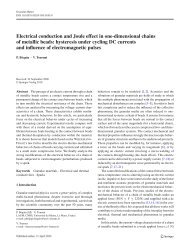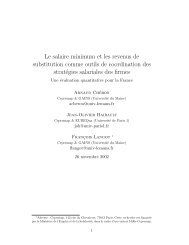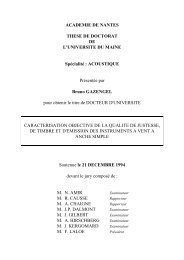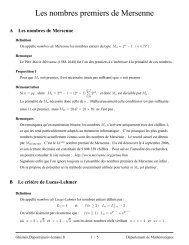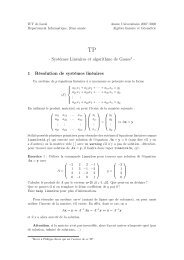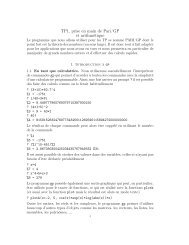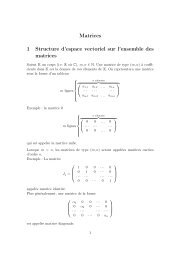Noise generated by cavitating single-hole and multi-hole orifices in ...
Noise generated by cavitating single-hole and multi-hole orifices in ...
Noise generated by cavitating single-hole and multi-hole orifices in ...
Create successful ePaper yourself
Turn your PDF publications into a flip-book with our unique Google optimized e-Paper software.
ARTICLE IN PRESS176P. Testud et al. / Journal of Fluids <strong>and</strong> Structures 23 (2007) 163–189Fig. 12. From other experiments at EDF (Archer et al., 2002), visualization of the developed cavitation regime for a <strong>s<strong>in</strong>gle</strong>-<strong>hole</strong> orifice(d=D ¼ 0:30, t=d ¼ 0:10, D ¼ 2:66 10 1 m) with s ¼ 0:49 <strong>and</strong> U ¼ 1:50 m s 1 (DP ¼ 3:1 10 5 Pa, P 1 ¼ 4:6 10 5 Pa). White bubbleclouds are observed around the jet formed at the orifice.Dynamical pressure signal at sensor 9 (10 5 Pa)2.521.510.50-0.5-1-1.5-2σ = 0.41-2.540 40.05 40.1 40.15Time (s)Fig. 13. Typical dynamical time pressure signal from a downstream transducer for the developed cavitation regime (here for the <strong>s<strong>in</strong>gle</strong><strong>hole</strong>orifice at s ¼ 0:41).velocity at the orifice U d as a relevant scal<strong>in</strong>g velocity. Hence the Strouhal number is def<strong>in</strong>ed asSt ¼ f 0tU d, (14)<strong>and</strong> values are reported <strong>in</strong> Table 5.


